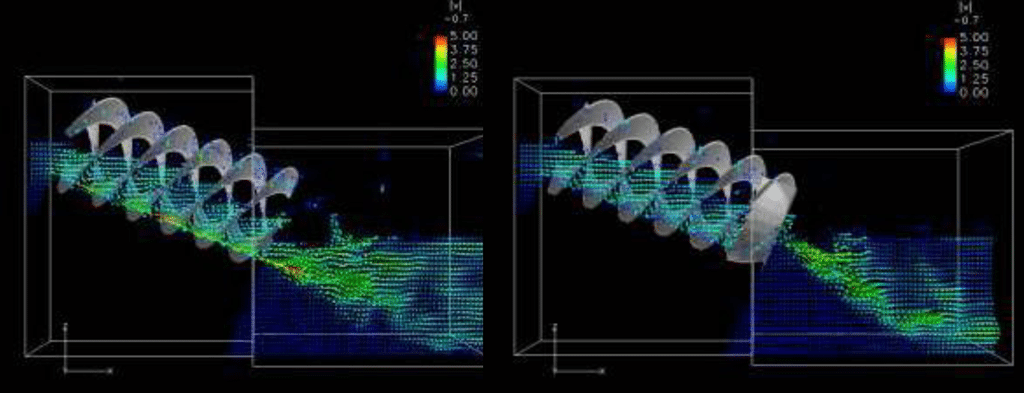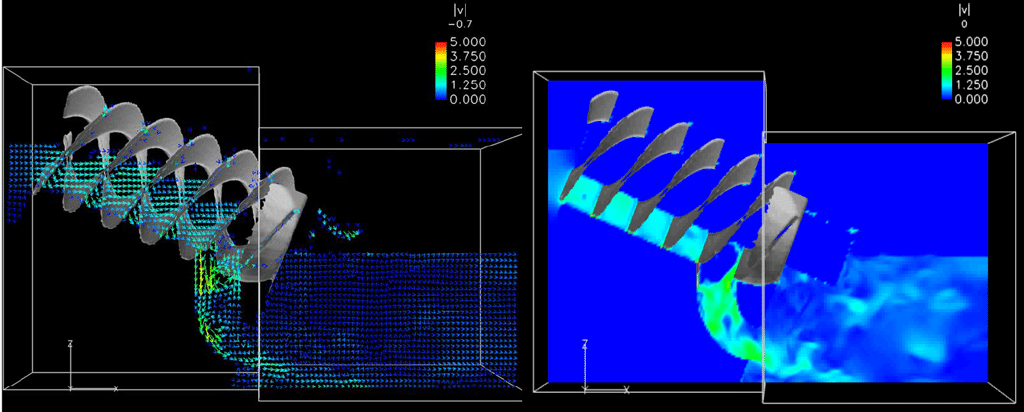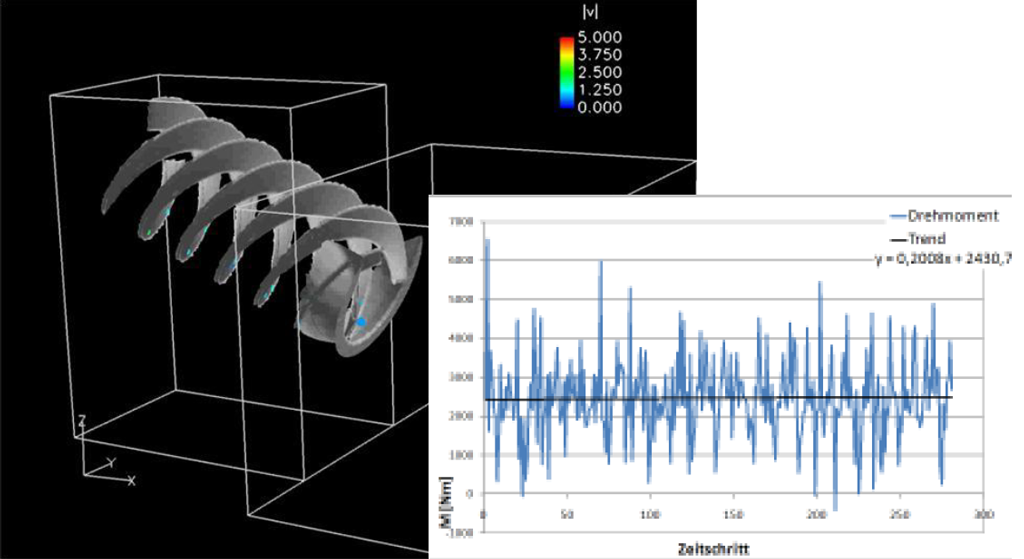
Hydrodynamic Screws
This material was contributed by Dr. Matthias Haselbauer of RMD Consult GmbH / Institute of Hydromechanics at the Technische Universität Munich
The use of small-scale hydro power is becoming more interesting as a way to control the increasing costs of energy. Large conventional hydro facilities require huge capital investment and long lead times for regulatory reviews. Smaller power plants can use new types of turbines. One example of these new types represents the hydrodynamic screw according to the principle of the Archimedes conveying screw.
At the right hand side of the outlet, a high velocity splash can be seen. This is mainly responsible for excessive noise. One problem with using hydrodynamic screws is the significant accompanying noise emissions caused by the changed rotation direction, compared to the conveying screw. Due to environmental noise regulations, noise emissions are often the decisive factor for power plant construction in urban areas.
Physical Modeling
To investigate the development and sources of noise in the use of hydrodynamic screws, a series of laboratory tests were conducted at the hydromechanics institute of the Technische Universität München. In a scaled laboratory test, the physical flow correlation between the up- and downstream water levels, the discharge, the rotation speed, the noise level and the resulting electric potential were examined and the different noise sources were detected and isolated. In addition to the standard hydrodynamic screw, which is similar to the conveying screw, four additional screw and hutch types were tested. The best geometric modification provided a noise reduction of more than 10 dB without adversely affecting the efficiency of the unit to any significant degree.
CFD Simulation
In addition to the laboratory tests, several very complex simulations were carried out with FLOW-3D. Our civil and environmental customers now use FLOW-3D HYDRO for these types of modeling and analysis. The three-dimensional modeling of rotating geometries placed huge demands on both FLOW-3D HYDRO and the hardware used. The General Moving Object (GMO) model enables the user to compute complex moving or rotating geometry like turbines or screws without adaption of the mesh and therefore without changes in the memory allocation. The GMO model was necessary to compute the fluid/solid interaction, and FLOW-3D HYDRO’s TruVOF algorithm was vital for calculating the water surface elevations.
Validating the CFD Results
In the simulations, the flow for all four different screw and hutch types was computed and compared. With the obtained results, the laboratory-based results could be certified. Furthermore, additional data processing of the velocity and pressure fields enabled the geometries to be optimized. Based on the mentioned hybrid model, a combination of CFD simulation and laboratory testing, the noise emissions of the hydrodynamic screws were reduced more than 10 dB. This enormous noise reduction enables a lot of new possible uses of this kind of small-scale hydro power plants, particularly in urban areas.
Acknowledments
Visualization and post-processing of the simulation data was done by Franziska E. Hammerl of Ingenieurbüro EDR GmbH, who used FieldView by Intelligent Light.



